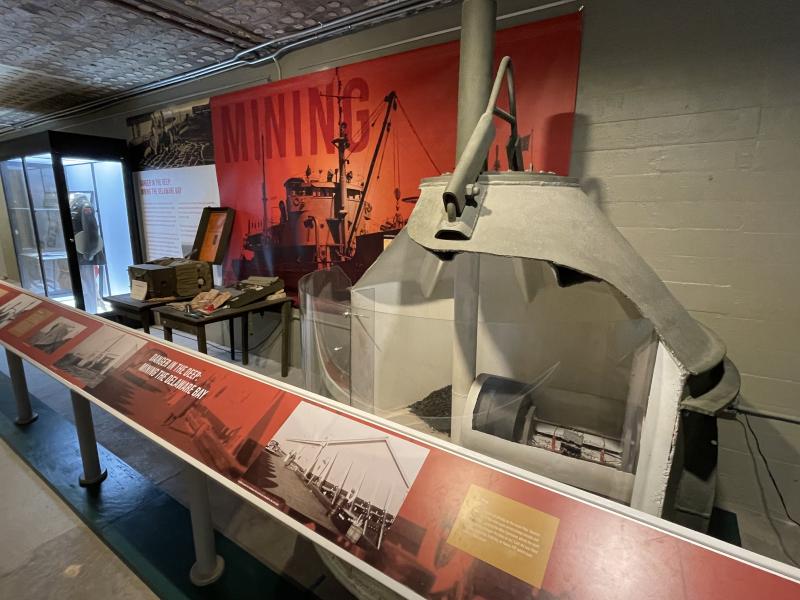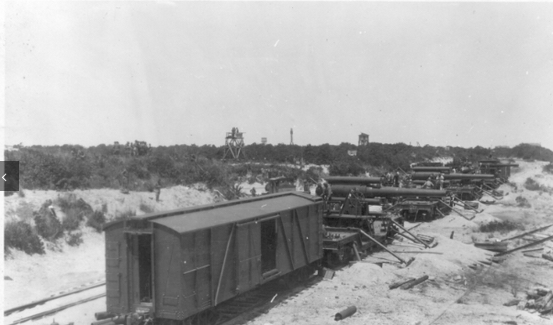Fort Miles defenses were underground and underwater

I could write a column a week for a year and not even get to all of the history surrounding Fort Miles in Cape Henlopen State Park.
The fort, built in record time, guarded the entrance to Delaware Bay during World War II to protect the vital shipping route to Philadelphia and points north.
Fort Miles was like a city. It had a gym, movie theater, barracks and mess hall, to name a few of the numerous buildings above ground. Underground were several gun batteries. The fort housed nearly 2,500 soldiers and civilian personnel, which made it larger than nearly every town in Sussex County.
Although I've written dozens of stories and taken hundreds of photos at Fort Miles, I really never paid much attention to an important mission carried out by the 21st Coast Artillery to place mines in Delaware Bay. The 13 mine fields contained an amazing 455 mines, some weighing more than 3,000 pounds.
In fact, the placement and maintenance of the mines and associated equipment became one of the major missions at the fort.
The Mine Command was established in 1942 as construction of Fort Miles continued.
The Fort Miles Museum currently has a fascinating exhibit about the mine mission, including a restored Fort Miles mine.
U-boats a threat
In the early years of World War II, German U-boats patrolled the East Coast and presented a real threat to shipping.
The fort's guns were not designed to engage submarines, so another plan was put into place to protect the bay.
It was decided to form a Mine Command at Fort Miles. Its mission was to place, maintain and operate the mines. The first mines were placed in early 1942.
M2 mines floated just above the water surface and were anchored to the sea floor. They had an electric cable connected to Marine Command.
Each mine was wired to a casement building to allow remote detonation.
M3 mines also floated and were also connected to Mine Command. The mines were placed in groups of 18 just outside the mouth of the bay.
Most of us have seen movies or read about ships hitting mines floating below the surface. Yet, the mines at Fort Miles were buoyant and floated on top of the water. They were packed with 500 pounds of explosive.
Pier for Mine Command
Lookouts would determine what caused the signal to go off, which protected our own ships from getting blown up. The crew could either detonate the mine or bypass the signal.
In addition, the mine crew could detonate one mine or all of them at once. It was sophisticated technology for its time.
A pier was constructed (now the park's fishing pier) to allow access to the water to place the mines by U.S. Army mine-planting vessels. The operation involved hundreds of personnel.
There was a drawback to the floating mines. Saltwater rusted and broke the steel anchor chains, which had to be retrieved by the crew. On the Fort Miles website, it was noted that some broken-off mines floated all the way to waters off Ocean City.
Cape Henlopen State Park staff located a mine near the fishing pier in 2016 and have preserved it.
Mines were not the first underwater defense. Personnel placed two large magnetic loop coils in the waters around the cape. The coils were triggered by any ship that passed over them, providing an early warning system. In addition, three SONAR buoys were placed in the bay to detect submarines.
Enemy ships did not try to get into the bay because of Fort Miles’ defenses. At the time, it was the most heavily fortified base along the East Coast. There were subs off the Delaware and New Jersey coasts, and on May 14, 1945, the crew of U-858 surrendered to fort officers, which was the first boat to surrender to the United States.






















































